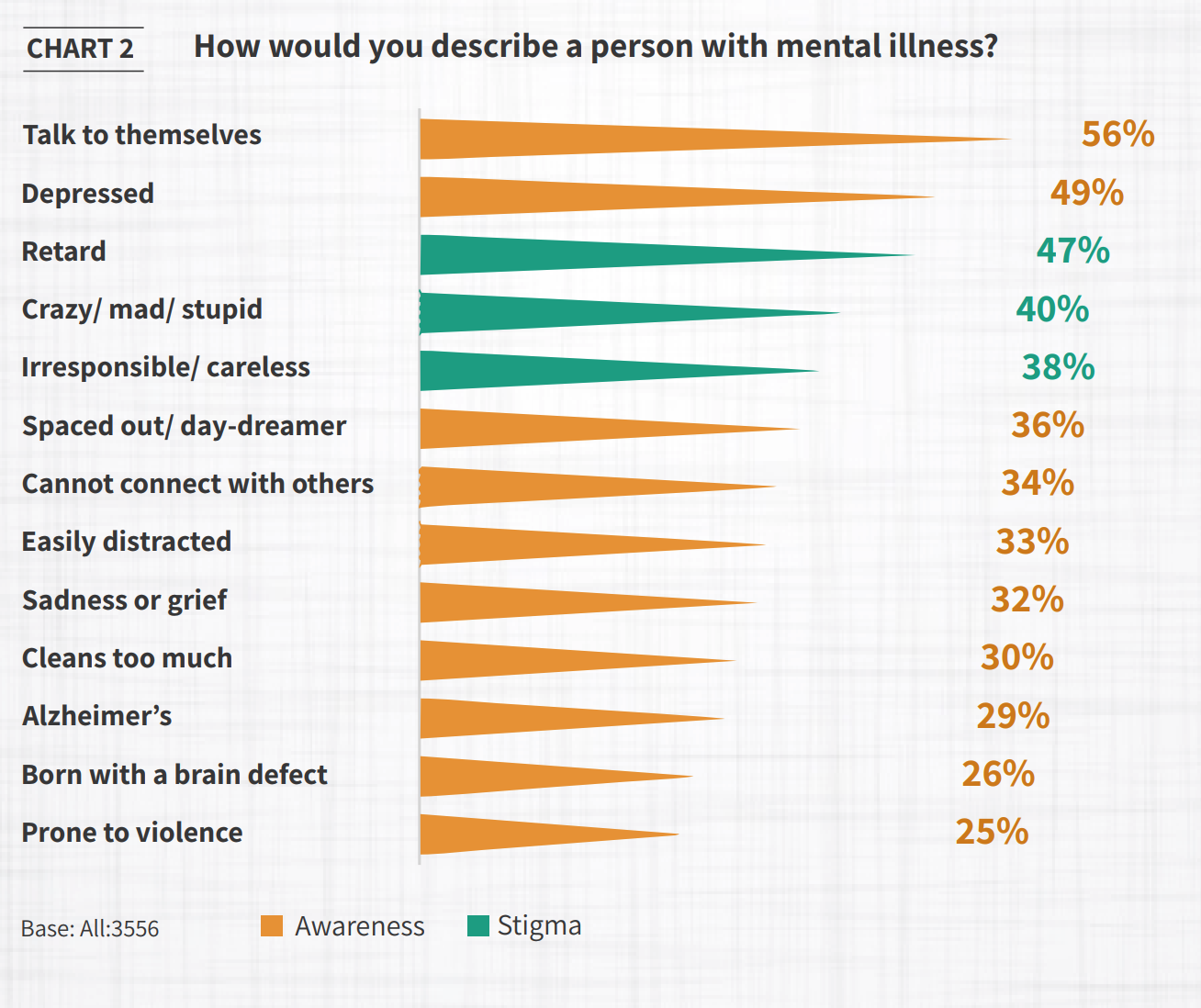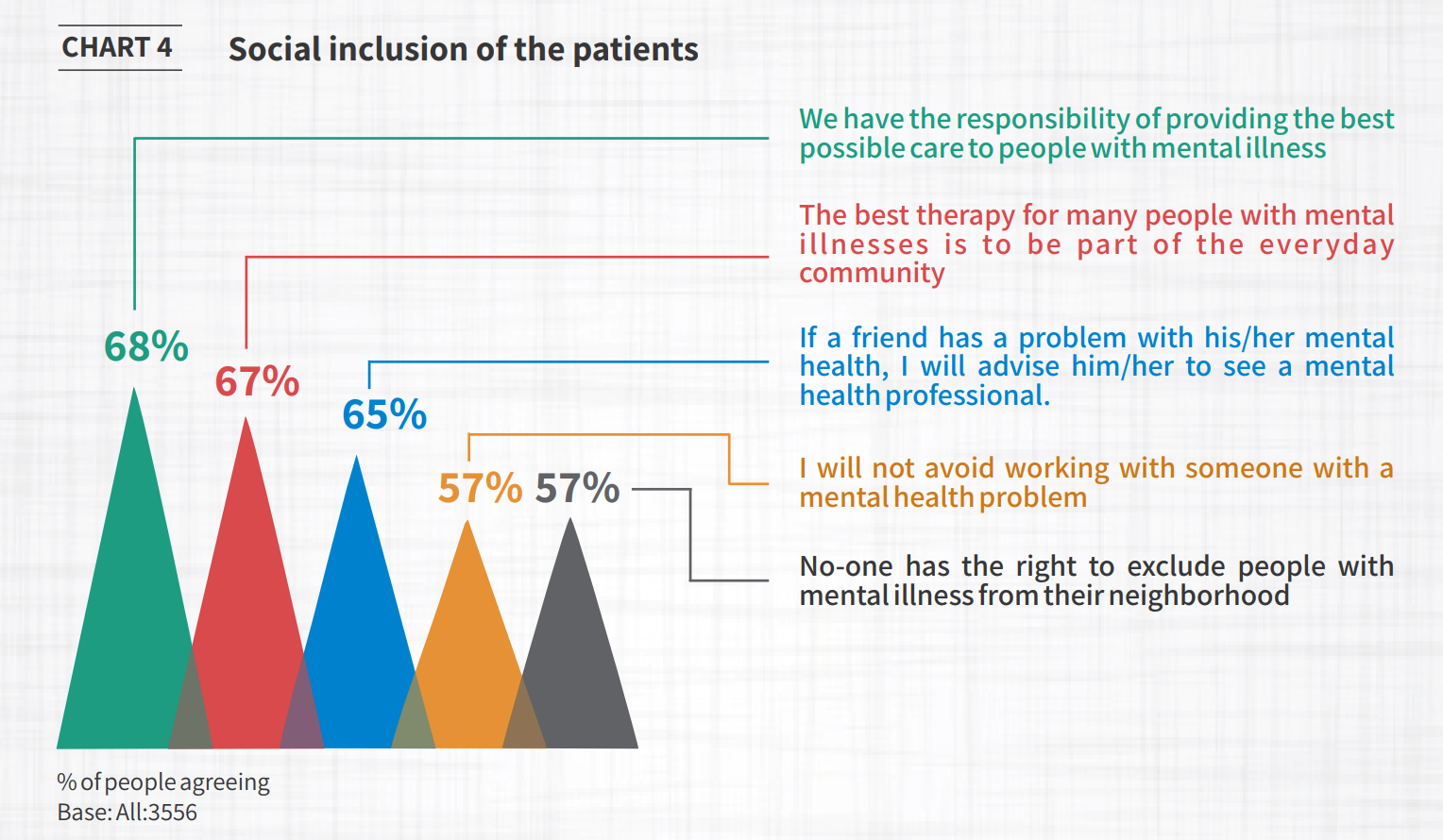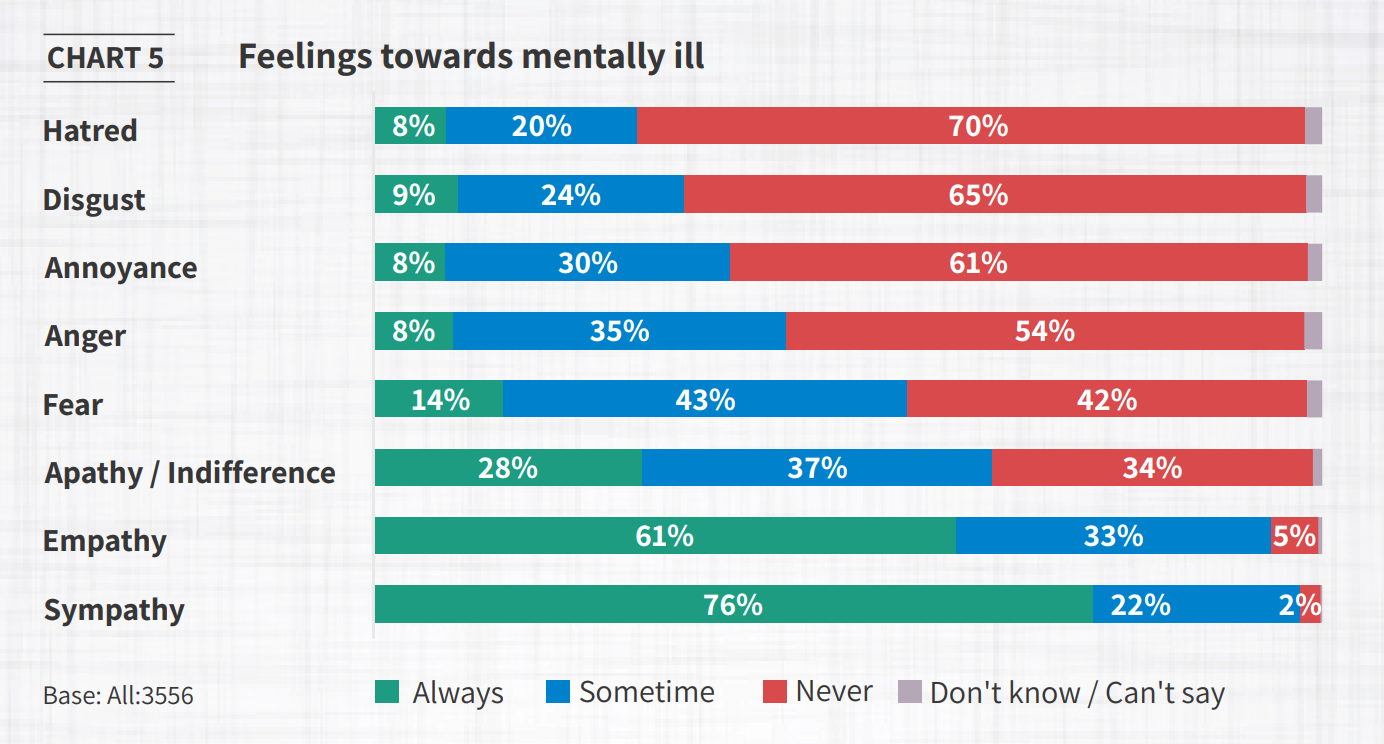Nearly 450 million people worldwide are currently living with a mental illness, yet nearly two thirds of people with a known mental illness never seek treatment.
Due to the stigma associated with mental illness, a lack of awareness, and limited access to professional help, only 10-12% of these sufferers will seek help.
Support, judgement, fear
The study revealed three broad segments of people based on their attitudes towards mental illness.

People’s understanding of mental health
The study showed that while 87% of the respondents showed some awareness of mental illness, 71% also used terms associated with stigma.

This shows that stigma and awareness are two separate issues although interlinked.
They need to be addressed in parallel in order to tackle the burden of mental illness in India. If individuals continue to view mental illness with apprehension and resistance, it will remain difficult for people with mental health concerns to seek the support they require due to the fear of being labelled or judged.
People's attitudes towards those affected

Social inclusion
A majority of respondents appreciate the importance of social support for people with mental illness, but while 68% agree that we have a responsibility to provide the best possible care for sufferers, the number of people who believe no one has the right to exclude people with mental illness from their neighbourhoods is comparatively lower (57%).

What people feel about sufferers
Respondents were asked about their feelings towards people with mental illness. While there exists widespread sympathy towards sufferers, with more than 75% of participants stating they would always feel sympathetic towards them, they also exhibit feelings of fear (14% would always be fearful), hatred (28% feel hatred sometimes or always), and anger (43% feel angry sometimes or always) towards people with mental illness. More than a quarter admitted that they would always be ‘indifferent’ towards people with mental illness.
This admission of the general public to their feelings towards people with mental illness again indicates the prevalent stigma in society.

Next steps
The need of the hour is to sensitize and educate individuals about the signs and symptoms of mental illness while normalizing the idea of seeking support for themselves and their loved ones.
There needs to be more open discussion and dialogue with the general public, and not just experts on this subject, which will in turn help create a more inclusive environment for people with mental illness.
Although it may seem bizzare to some, it does come to light..how much of our life we spend worrying about stuff that doesnt matter. The best way to fight and sail through would be to life into put perspective and see what matters.
Source :
YOUR LIFE YOUR VOICE
The Live Love Laugh Foundation

Comments
Post a Comment